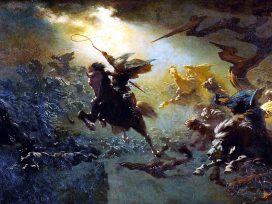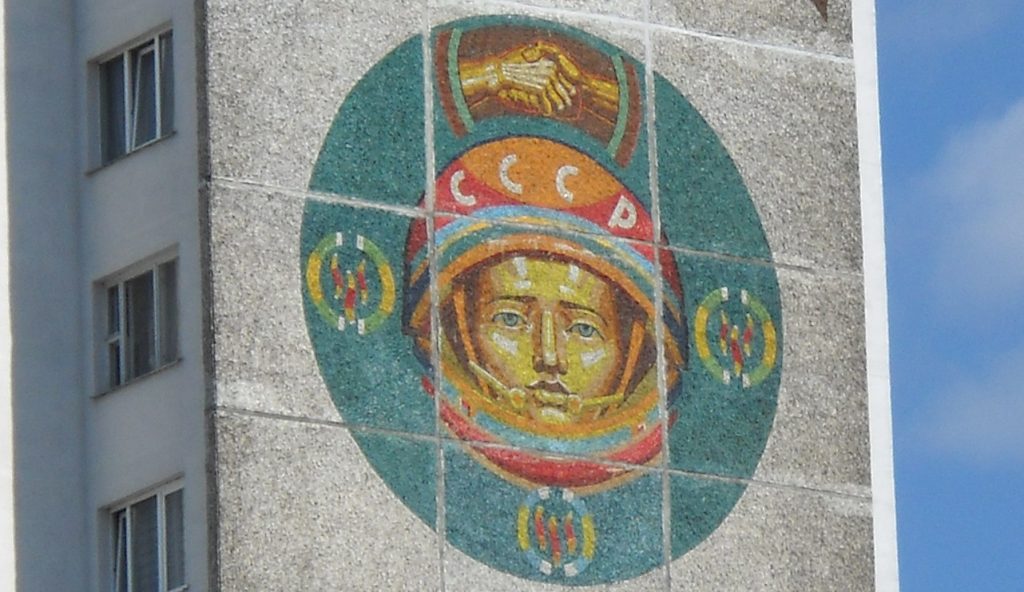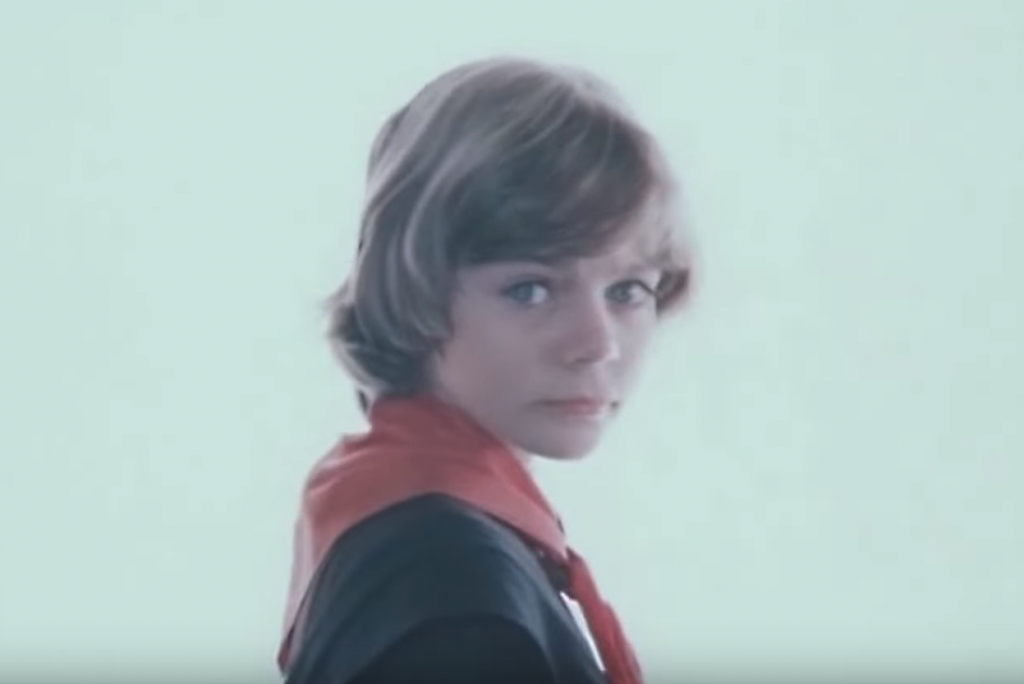
The ongoing repression of Belarusian society now extends to the banning of literary works by Belarusian writers seen as seditious. The reason can only be that they offer the regime its true reflection, writes one of the country’s leading poets.
For many Belarusians, Lukashenka offered shelter from the upheavals of the 1990s. But when Soviet nostalgia began to fade, faux utopia gave way to an eternal authoritarian present. Since Summer 2020, the future has returned to Belarus. What form will it take this time?
For many Belarusians, the summer of protests in 2020 revived the idea of the future. The mass marches in Minsk and other cities were a clear manifestation of the people’s determination to decide their future for themselves, a right that the regime deprives them.
The historian François Hartog has explored the links between various communities and the notion of time, coining the term ‘regime of historicity’ to indicate how different societies generate ideas about their own past, present or future. Some seek their raison d’être in an idealized past, a ‘golden age’; others by trying to bring the future closer, living for a particular ‘futuristic’ goal; yet others are dominated by a ‘present’ that shapes both their past and future.
The recent history of Belarus might be described in terms of shifting notions of the future. Quite a few have emerged within the scope of my own, and my generation’s memory. We have survived, lived through, rejected and managed to be disappointed by several versions of a collective future.
First there was the future we were promised back in the USSR. This version – future no. 1 – came to an end in 1991. Future no. 2 emerged in the 1990s; it was optimistic, utopian, and diametrically opposed to the Soviet one. It was replaced by an authoritarian substitute, future no. 3, which crumbled once and for all in 2020. Now we are facing future no. 4. What will it be like?

A. M. Kishchenko – “The city of Science “. Soviet mural, Minsk. Author: EuroAsia Vizion: Source: Wikimedia Commons
It is still customary to think that the USSR existed within a specific, ‘futurist’ regime of historicity (relation to time) – as a society whose evolution was defined by the future, by the project of building communism. Other than certain nuances, however, this official picture of the future did not leave room for alternative versions.
As for many others of what anthropologist Aleksey Yurchak has called ‘the last Soviet generation’, a key part of my experience of growing up in Belarus was a specific perception of ‘the future’. How, in those days, did we envisage that future, on both an individual and collective level? Our idea was a mix of those ideological postulates of Soviet Marxist technocratic fantasies common in the second half the twentieth century, with (in our case) childish, perhaps infantile notions of our own, personal possibilities. At the same time, this future was constantly under threat, as a nuclear war with the capitalist West could have broken out at any moment.
During my childhood in the 1980s, visions of a near future in which regular cosmic flights would be a reality went hand in hand with the idea, promoted by state propaganda, that the social endeavours of Soviet citizens would culminate in a happy ending. That is, in the completion of the task of building communism, which epitomized the ‘correct’ future.
Science fiction was popular in the USSR, but its utopian depictions of a great future were often the result of censorship. Science fiction had replaced explicitly dystopian works that could not be published in the USSR (George Orwell’s 1984 circulated only in samizdat). Nevertheless, even books published officially found ways of alluding to social problems; a number of Soviet sci-fi authors, such as the Strugatsky brothers, perfected this art. In the 1960s, Soviet dissidents had also thought critically about the future, as illustrated by Andrei Amalrik’s almost prophetic essay of 1969, ‘Will the Soviet Union survive until 1984?’
Andrej Mryj’s 1929 satirical novel Тhe Notes of Samson Samasuj was published in Belarus in 1988, during Gorbachev’s reforms, while the country was still a part of the Soviet Union. The author, a victim of the 1930s purges, was forced to write letters to Stalin pleading for his release shortly before he died. Mryj’s novel depicts the ‘new Soviet man’ who climbs the social ladder by complying to a grotesque degree with the authorities’ every demand. This satirical work can also be regarded as a depiction of the Bolsheviks’ failed utopian attempt to create a socialist future. To some extent, it was a dystopian work, albeit in the guise of satire. Later on, dystopian themes became extremely rare in Belarusian literature.
In her study of dystopian works in Belarusian literature, Elena Svechnikova identifies the 1980s and 1990s as the period when the genre emerged in Belarus. In dystopian thinking about the future, Svechnikova argues, ‘cultural, political and social changes are rated negatively’. While official propaganda promoted communism, writers produced books that were conservative, patriarchal, critical of modernity and of urban culture, and which called for a return to a pre-industrial harmony.
In this context, conservatism can be seen as a specific reaction to social change and the accelerated process of modernisation that culminated in the Stalinist era and later in the 1960s and 1970s. The transformation was rapid, leaving in its wake a mutilated past, which in the social imagination of intellectuals could not possibly ever transform into a fully optimistic future.
One of the most successful broadcasts in the popular Soviet culture of this period was the TV miniseries Guest from the Future, released in 1985 – the year Gorbachev embarked on perestroika. The show was aimed at schoolchildren and partly set in Moscow in 2084. It featured characters travelling in personal flying devices, planets connected by a spacecraft service, inventions such as a special mind-reading box, and other such futuristic tropes. Much of the show, however, was set in the past, in the Moscow of 1984. There, an ordinary young pioneer, Kolya Gerasimov and his friends, along with Alisa, a girl from the future endowed with supernational powers, try to retrieve a mind-reading box stolen by space pirates.
Life in 1984 is presented in a somewhat ironic tone, with strange grown-ups and perennial economic deficit problems, while the everyday life of Soviet people betrayed hardly any sign of the existence of space technologies. Comparing the Moscow of 1984 with the glorious future of 2084, viewers might have wondered how ‘the future’ could arise from the kind of ‘present’ they were seeing all around themselves.
Though aimed at children, Guest from the Future presents an allegorical depiction of grown-ups and the impossibility of a certain future. It represents the hope, but also the cynicism, doubt and critique in the minds of an older generation, born in the gap between a once optimistic but now dimmed picture of the future and the ‘real existing’ socialism of the 1970s and 1980s. The show highlights the problems of the present by juxtaposing it ironically with the future. Nevertheless, any actual solution to the ills of the present remain utopian and unattainable.
The show closes to the sound of a song, ‘The beautiful is far away’. The lyrics address the ‘future’, begging it ‘not to be cruel’. The song gained enormous popularity after the show aired, becoming iconic for several generations. The mood and message it conveyed was an almost religious plea for our children to have better lives than we did. It also breathed a kind of nostalgia – a nostalgia for the future, for an idea of what had not yet happened but once seemed possible, almost tangible, and real.

Screenshot from Прекрасное далеко – песня из к/ф Гостья из будущего (1985) / Wonderful Far-away (Prekrasnoe dalyoko) – song from the movie Guest from the Future (1985) by Киностудия Горького / Gorky Film Studio via Youtube
In 1986 the Chernobyl nuclear power station disaster put a sudden end to technocratic fantasies of the future, bringing the problems of the present to the fore once again. Not only did the disintegration of the USSR in 1991 bring about the end of the Soviet ‘utopia’, it also offered people a new collective ideal: that of a return to ‘normality’ in the shape of westernization, the market and democracy.
After 1991, everyday reality in Belarus underwent fast and radical change. The idea of a collective communist future vanished, to be replaced by a sense of freedom. Possibilities opened up, as did uncertainty. New prospects appeared, at least for those who had the capacity to change, or whose main asset was their youth. The system of common values collapsed, traditional social structures began to fall apart, and money became the key to social achievement.
Money suddenly gave the future a material form, turning it into something substantive and individualized, expressed in terms of how, and what one could consume. At the same time, the future turned into something that was not quite the future, in the sense that it was difficult to fully imagine. Instead, it seemed very close to the present, in which the way to live was to make money ‘right now’.
Symbols of this ‘future-cum-present’ were the flea markets that sprung up, seemingly spontaneously, in Belarusian cities in the 1990s. Markets would be set up in sports stadiums and squares previously used to stage socialist rallies, and in every other conceivable place. The sellers were those who had been made redundant by collapsed state enterprises, scientific institutions and schools.
The markets were flooded with new merchandise imported from abroad, the demand for which was driven by attempts to delineate new social divisions through consumption. Excessive consumption was probably also an unintended consequence of the Soviet dream of building communism – instead of having to postpone the future it could now, at last, be lived.
On an everyday level, this Belarusian dream of the future morphed into pragmatism. But on the intellectual and political level, new ideas emerged about how to accelerate the arrival of a Belarus of the future. The country would be democratic, European and integrated into the global political system – a Belarus no longer polarized by Cold-War divisions. Bill Clinton’s 1994 visit was another symbolic moment, marking the disappearance of the traditional picture of ‘the enemy’ shaped during the Soviet era, which reached its climax under the shadow of an impending ‘nuclear apocalypse’.
After the first years of independence (1991–94) there emerged the idea of ‘nation building’, a bid to live at last in a country that, having defeated and outlasted the idea of empire, met all the criteria of a nation-state. Identity (as always) was politicized; history began to be discussed from a ‘national perspective’, and new state structures and institutions were established.
Looking back at this period, we speak of a ‘naive’ society, one that believed in its ability to reform its institutions and rid itself, within a short space of time, of the problems of the past. This naivety, however, gradually met the reality of civic and political life. The turbulent dynamics of these years generated a sense of certainty that the changes were irreversible. Many people believed that freedom would establish itself of its own accord, without any special care. We stopped thinking about the future as intensely as we had before; a future had arrived, and that was enough. There were fewer utopias, more pragmatism, and a certainty that everything was going as well as it possibly could. We had gained independence and that was what mattered.
And then, irony of ironies, the future that we had stopped thinking about turned into a dictatorship.
From the outset, many people regarded Lukashenka’s regime as a Soviet throwback. For as long as it could – at least until the mid-2000s – it drew on nostalgic images of the past. Eventually, however, even the idea of a Soviet past fell out of favour. Instead, the memory of World War II, adapted to the needs of the new-old political class, came to be exploited as a key symbolic resource.
Unlike the Soviet idea of a communist future, with its utopian and global nature, and unlike the post-independence period of the mid-1990s, the idea of a future under Lukashenka relied on straightforward propaganda: the country had no future without the president.
The 2010s began with the establishment of the Museum of Modern Belarusian Statehood. There you will find hardly any reference to the late 1980s or early 1990s, or indeed to anything that happened before Lukashenka’s rule. From that point on, the dominant idea was the erasure of the past and its political struggles. There had never been an alternative to Lukashenka in the past and there would be no alternative to him in the future. In fact, there was no such thing as a future. The past had been censored and the future now amounted to how long Lukashenka himself would live. All that was left was ‘the present’, with authoritarian populism its leading idea.
‘Stability’ became a key slogan of this period. Stability meant the immutability of the political regime and the ambiguous atmosphere that arose around it. Though they knew what authoritarianism meant, many Belarusian citizens did not yet regard it as a complete disaster and were still prepared to conform. Everyone was stuck in the authoritarian routine, looking for ways to survive in a world defined by consumption. In 2013 the media reported that someone had replaced billboards in the centre of Minsk with posters announcing that ‘This stability resembles death!’ Performance art put its finger on what was actually happening.
In the 2010s a new myth was forged. The intention was to create an illusion of future – this was the myth of an ‘IT country’. Although the IT sector had evolved independently of state planning, the regime managed to co-opt it, partly thanks to lobbying by representatives of the industry. A ‘High Tech Park’ opened in Minsk to demonstrate that authoritarianism was capable of modernization and that Belarus was moving towards a digital future. The almost complete shutdown of the internet in August 2020 put an end to that future, too.
In the wake of the 2020 protests that destroyed the legitimacy of the regime, violence became the central instrument of politics. The present mood vacillates between hope and hopelessness. The system may survive, but it has no future; all it has left is coercion and the exploitation of the past.
How can one envisage ‘a future’ for Belarus today? What questions need to be posed? Some are pragmatic: What will the end of authoritarianism be like? What will happen to its institutions and practices? What kind of price will we have to pay? Will we be able to ‘process’ the legacy of the dictatorship and create a system that will prevent the emergence of another one? Will the new system be democratic, socially just and inclusive? Will we be able to create universal structures and relations? And will we manage, at the same time, to transcend political pragmatism and inject more substance and meaning into our endeavours?
It seems that all of us in this country, with varying degrees of intensity, have been asking these questions for many years. During this time, we have seen several attempts to shape the picture of the present, the past and the future. The disappearance of the utopian Soviet project and the fading away of the national independence project of the late 1980s and early 1990s have generated their own kind of nostalgia for a different future (and now, also, a present).
The protests of 2020 and the subsequent crackdown, followed by violence and renewed resistance in 2021, have reopened the discussion. There is sense that the future has returned. Will we grasp this opportunity? Or will we be left with nothing but nostalgia for yet another (un)realized project of a collective future?
This article is part of the Dekoder series, Belarus – Spurensuche in der Zukunft, in collaboration with the S. Fischer Foundation and Colta.ru
Published 13 December 2021
Original in Russian
Translated by
Julia Sherwood
First published by Colta.ru (Russian version); Dekoder (German version); Eurozine (English version)
© Aleksey Bratochkin / Colta.ru / Dekoder / Eurozine
PDF/PRINTSubscribe to know what’s worth thinking about.

The ongoing repression of Belarusian society now extends to the banning of literary works by Belarusian writers seen as seditious. The reason can only be that they offer the regime its true reflection, writes one of the country’s leading poets.

Three years after the mass anti-regime protests in Belarus, the pro-Russian state continues to brutally repress all expressions of national identity. But people have not forgotten their experiences in 2020 and believe that Belarus’s long history of foreign rule is nearing its end.